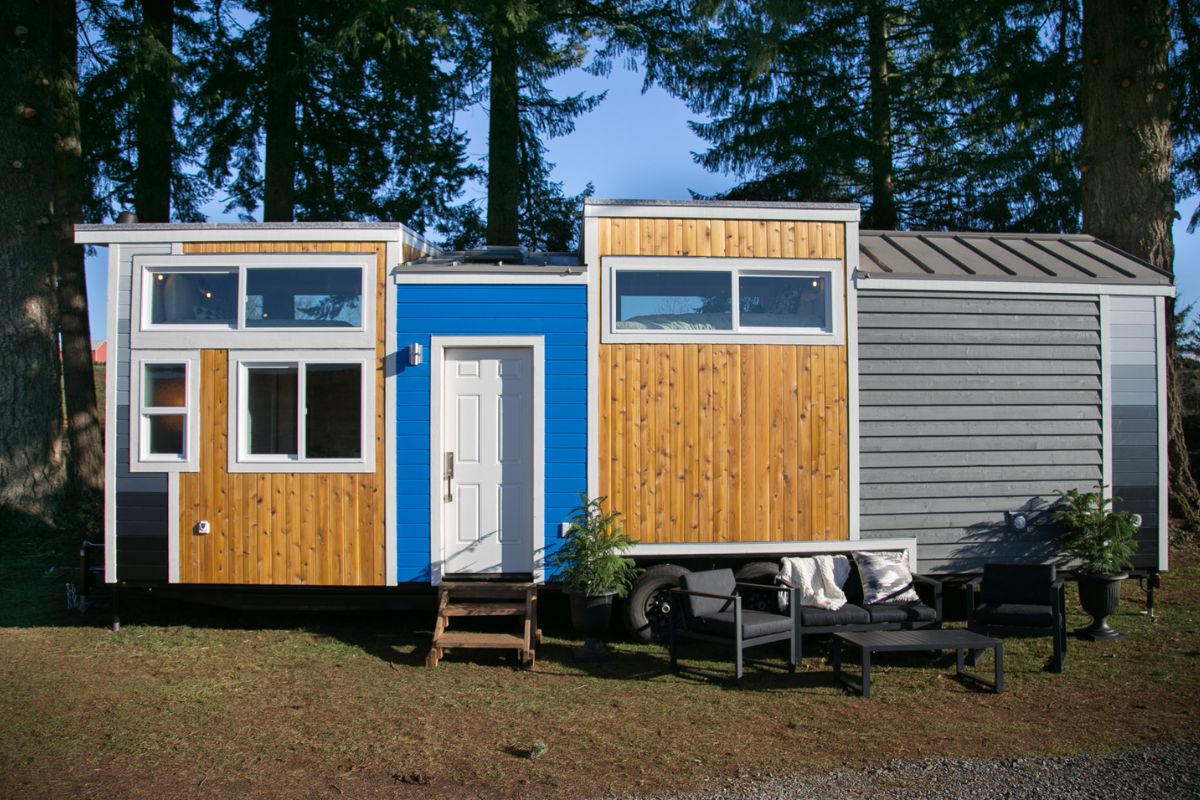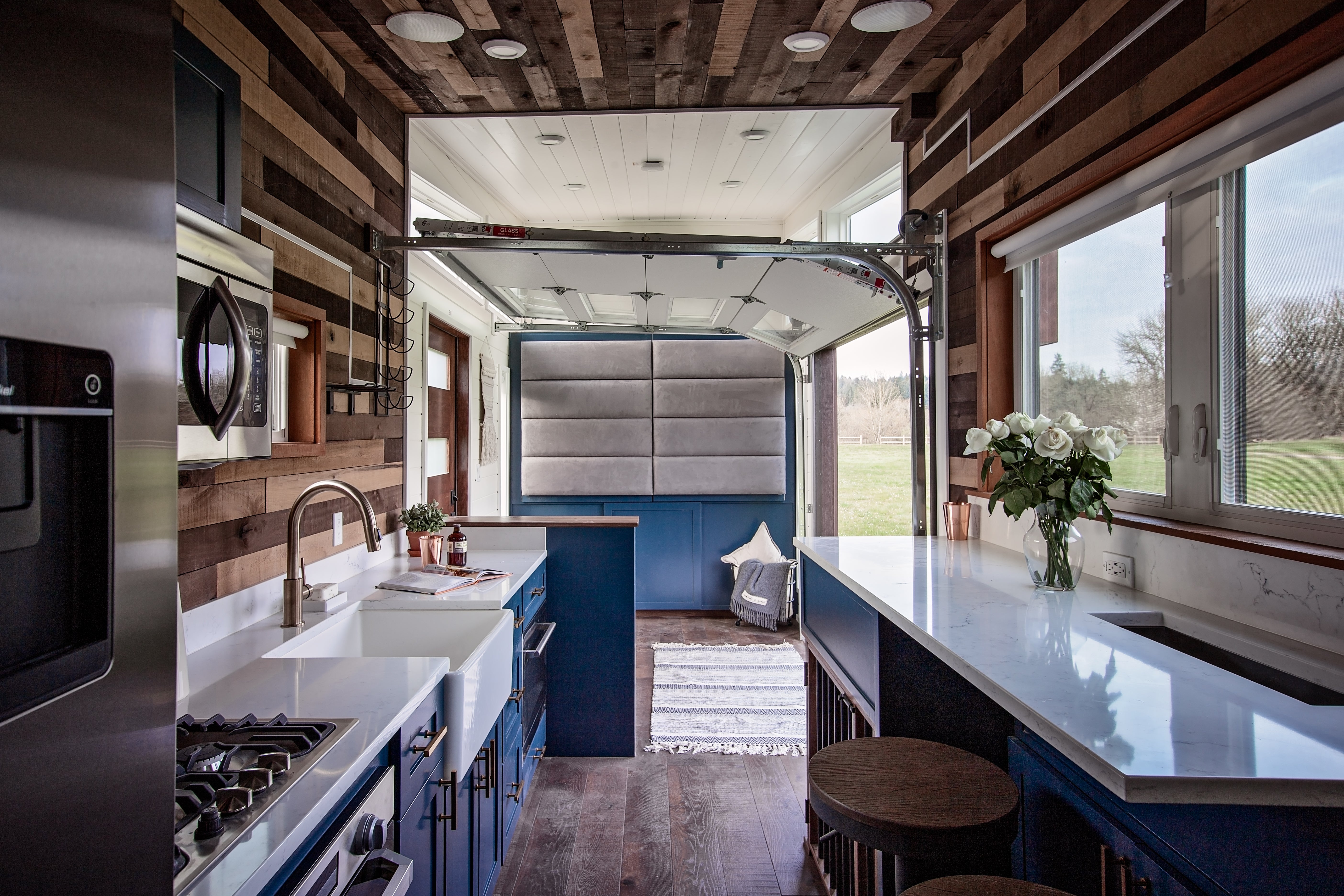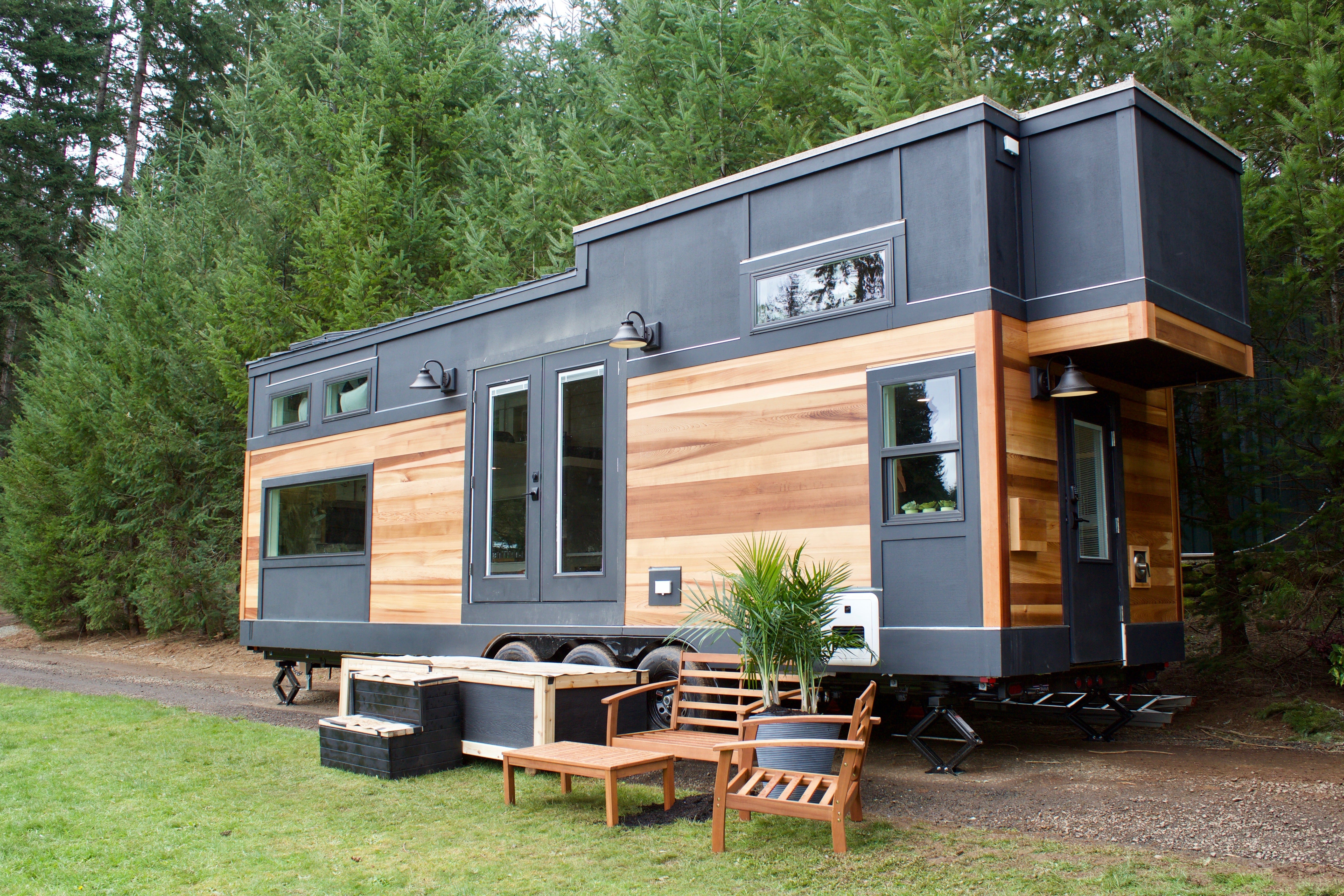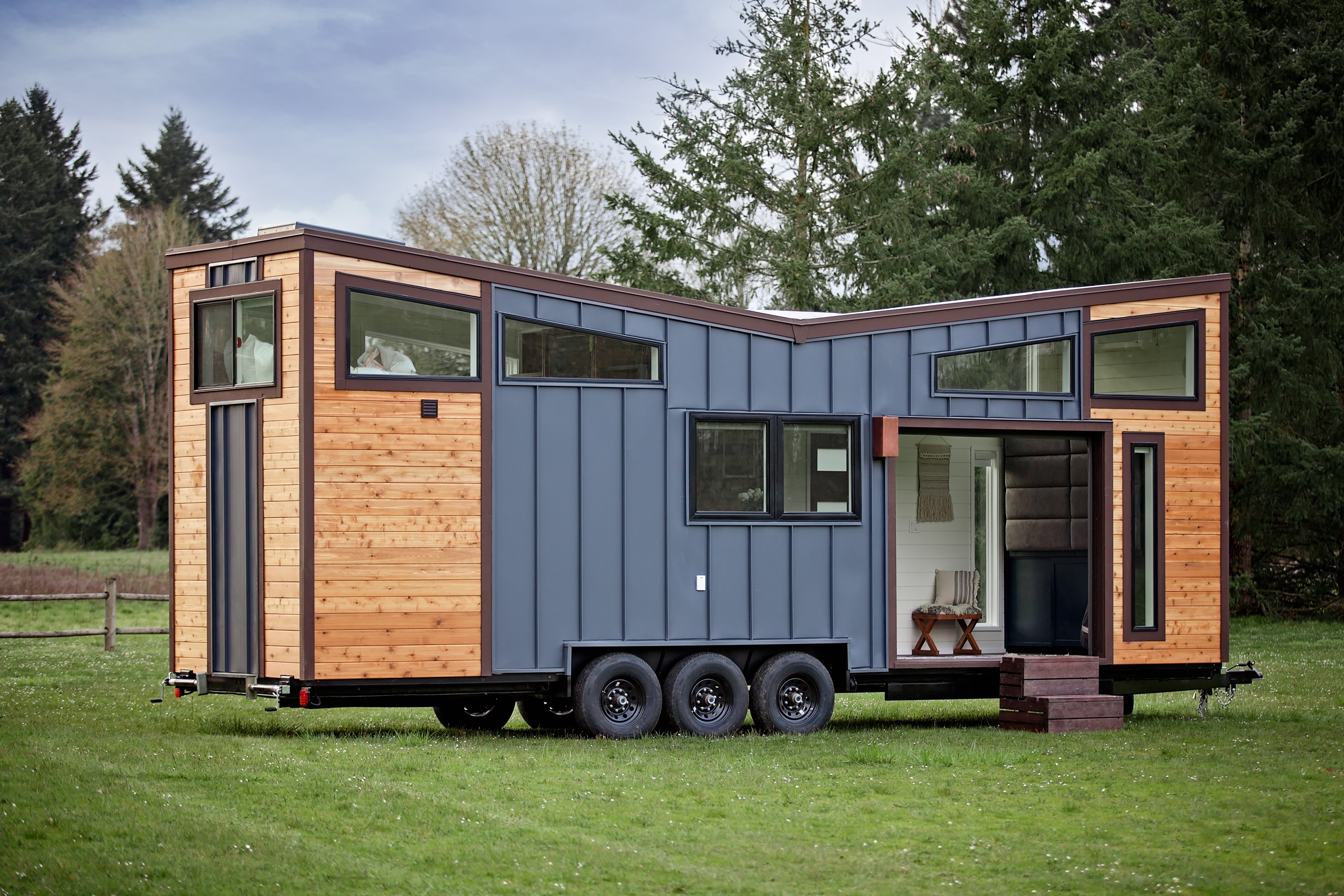Joining a tiny house village lets you embrace a sustainable and minimalist lifestyle while forming strong community ties. You'll enjoy financial savings with lower costs and a reduced environmental footprint. Living in such a community often means sharing resources and participating in communal activities like gardening and shared meals. Choosing a village involves considering location, infrastructure, and community vibe—whether it's sustainability-focused or artistically inspired. Be prepared to understand the costs, legal requirements, and lifestyle adjustments of tiny living. Discover how this lifestyle encourages intentionality and reduced stress, and explore connections that enrich your experience for a fulfilling community life.
Key Takeaways
- Research village locations and community focus, considering sustainability, artistry, or family-oriented environments.
- Understand and comply with local zoning laws and building codes for tiny house legality.
- Evaluate infrastructure essentials like water, electricity, and waste disposal for compatibility.
- Consider the financial aspects, including initial costs, land rental fees, and ongoing expenses.
- Engage with community norms, participate in shared activities, and understand HOA rules.
Understanding Tiny House Villages
Tiny house villages are more than just collections of small dwellings; they're vibrant communities that emphasize sustainable living and a minimalist lifestyle. When you step into a tiny house village, you're entering a space that values community, shared resources, and innovative living solutions. Each village is unique, often shaped by the environment, regional culture, and the people who inhabit it. You'll find that these villages prioritize eco-friendly practices, employing renewable energy sources and efficient waste management systems.
As you explore joining a tiny house village, understanding the communal aspect is essential. These villages are built on collaboration, with shared amenities like gardens, workshops, and communal kitchens. You'll engage with neighbors, participate in group activities, and contribute to the upkeep of shared spaces. It's not just about living in a small home; it's about being part of a community that values simplicity and sustainability.
In a tiny house village, adaptability is key. With limited space, you'll need to embrace a minimalist mindset, focusing on what truly matters. This shift encourages a deeper connection with both your surroundings and the people who share this unique lifestyle with you.
Benefits of Tiny Living
Embracing minimalism opens the door to a host of benefits unique to tiny living. First and foremost, you'll enjoy significant financial savings. Tiny homes are typically less expensive to build and maintain than traditional houses, which means lower mortgage payments and utility bills. You'll also find your environmental footprint shrinking. With a smaller space, you naturally consume fewer resources, from energy to water, and generate less waste.
Living tiny encourages you to declutter and focus on what truly matters. You'll be more intentional about your possessions, keeping only what you need or genuinely cherish. This lifestyle shift can lead to reduced stress as you're no longer overwhelmed by excess belongings.
The simplicity of tiny living fosters a sense of freedom. With fewer financial burdens and a streamlined lifestyle, you can explore new hobbies, travel more, or simply enjoy more leisure time. Additionally, tiny homes can be mobile, offering the flexibility to change your surroundings without the hassle of traditional moving.
Finally, tiny living often strengthens community ties. With less space indoors, you'll spend more time in shared outdoor areas, naturally forming connections with neighbors and nurturing a supportive, engaged community.

Finding the Right Village
As you relish the newfound freedom and simplicity of tiny living, choosing the right tiny house village becomes your next exciting step. Start by considering location. Do you want to be near a bustling city or nestled in a serene countryside? Think about the climate and proximity to work, family, and recreational activities important to you.
Next, investigate the community vibe. Each village has its distinct culture and values. Some focus on sustainability, while others prioritize artistic expression or a family-friendly environment. Visit potential villages, attend community events, and talk to current residents to see if their lifestyle aligns with yours.
Infrastructure is another key factor. Check if the village offers essential amenities like water, electricity, internet, and waste disposal. Assess the layout and space allocation to guarantee it meets your privacy and social interaction needs.
Look into the village's governance and rules. Understand the decision-making process and any regulations regarding house design, pets, or gardening. Confirm they resonate with your lifestyle preferences and future plans.
Finally, consider the long-term potential. A village with a clear vision for growth and sustainability might offer better opportunities for personal and community development. Choose wisely, and your tiny house village will become a fulfilling home.
Costs and Budgeting
When planning your move to a tiny house village, it's crucial to understand the costs involved and how they'll fit into your budget. Start by considering the initial investment of purchasing or building your tiny house. Depending on your design and material choices, prices can vary greatly. You might spend anywhere from $20,000 to $100,000 or more.
Next, think about the land rental or purchase fees in the village. Some villages might charge monthly fees, which can range from $200 to $600, to cover utilities and shared amenities like laundry facilities, gardens, or community spaces. Be sure to inquire about what's included to avoid unexpected expenses.
Transportation costs are another factor. Moving your tiny house to the village can require a specialized truck or trailer, which can add a few thousand dollars to your budget. Don't forget ongoing costs such as utilities, maintenance, and insurance. Tiny homes tend to have lower utility bills, but it's wise to factor in potential maintenance expenses and insurance premiums, which vary by location and provider.
Budgeting carefully guarantees you enjoy the financial freedom tiny living promises without surprise costs.
Designing Your Tiny Home
With a clear understanding of your budget, it's time to focus on designing your tiny home to suit your lifestyle and needs. Start by identifying your must-have features. Do you need a functional workspace, or perhaps a cozy reading nook? Consider your daily routine and how to maximize space for comfort and efficiency.
Next, think about multi-functional furniture to save space. A fold-out table or a sofa that transforms into a bed can be invaluable in a tiny home. Opt for built-in storage solutions wherever possible; every inch counts. Shelves above doorways or under-stair storage can keep your home organized without feeling cramped.
Lighting plays a significant role in making your space feel larger. Use a mix of natural light, through well-placed windows, and artificial lighting with adjustable brightness. Choose light colors for walls and floors to give the illusion of more space.
Lastly, make sure your design reflects your personality. Whether it's through color schemes, artwork, or plants, personal touches make your tiny home feel inviting and uniquely yours. Remember, designing your tiny home is about creating a space that is both functional and truly your own.
Community Integration
Shifting into a tiny house village offers a unique opportunity to become part of a close-knit community, where collaboration and shared resources enhance daily living. You'll find that fostering connections with your neighbors can greatly enrich your experience. Start by participating in communal activities such as shared meals, gardening, or skill-sharing workshops. These activities not only help you bond but also create a sense of belonging.
Communication is key. Engage in open dialogue with your neighbors to establish community norms and expectations. This creates a harmonious environment where everyone feels heard and valued. You can also contribute by sharing your talents, whether it's carpentry, cooking, or organizing events. In doing so, you help build a supportive network that's beneficial for all.
Navigating Legal Considerations
Starting on the journey of joining a tiny house village requires a keen awareness of legal considerations. First, familiarize yourself with zoning laws in your desired location. Some areas welcome tiny homes, while others have strict regulations. Check if the village is in compliance with local zoning and building codes, as this will affect your ability to reside legally.
Next, consider permits. You might need specific permits for your tiny house, especially if it's on wheels. Verify that the village has the necessary approvals to avoid future complications. It's essential to confirm that the land use is appropriate for your lifestyle and that there's no risk of eviction due to legal issues.
Utility connections are another factor. Confirm that the village has legal arrangements for water, sewage, and electricity. If the village operates off-grid, check for compliance with local health and safety laws.
Finally, review any homeowner association (HOA) rules or community agreements. These documents outline your rights and responsibilities, making sure you're aware of any restrictions or obligations. Being proactive about legal considerations will smooth your shift into a tiny house village, allowing you to focus on enjoying your new lifestyle.
Conclusion
Joining a tiny house village offers you a unique opportunity to embrace minimalist living while enjoying a vibrant community. You'll benefit from reduced costs, eco-friendly living, and a supportive network. To make the most of this experience, choose the right village that aligns with your lifestyle, carefully budget for your tiny home, and guarantee you understand the legal considerations. By actively engaging with your new community, you'll create a fulfilling and sustainable way of life.






Share: